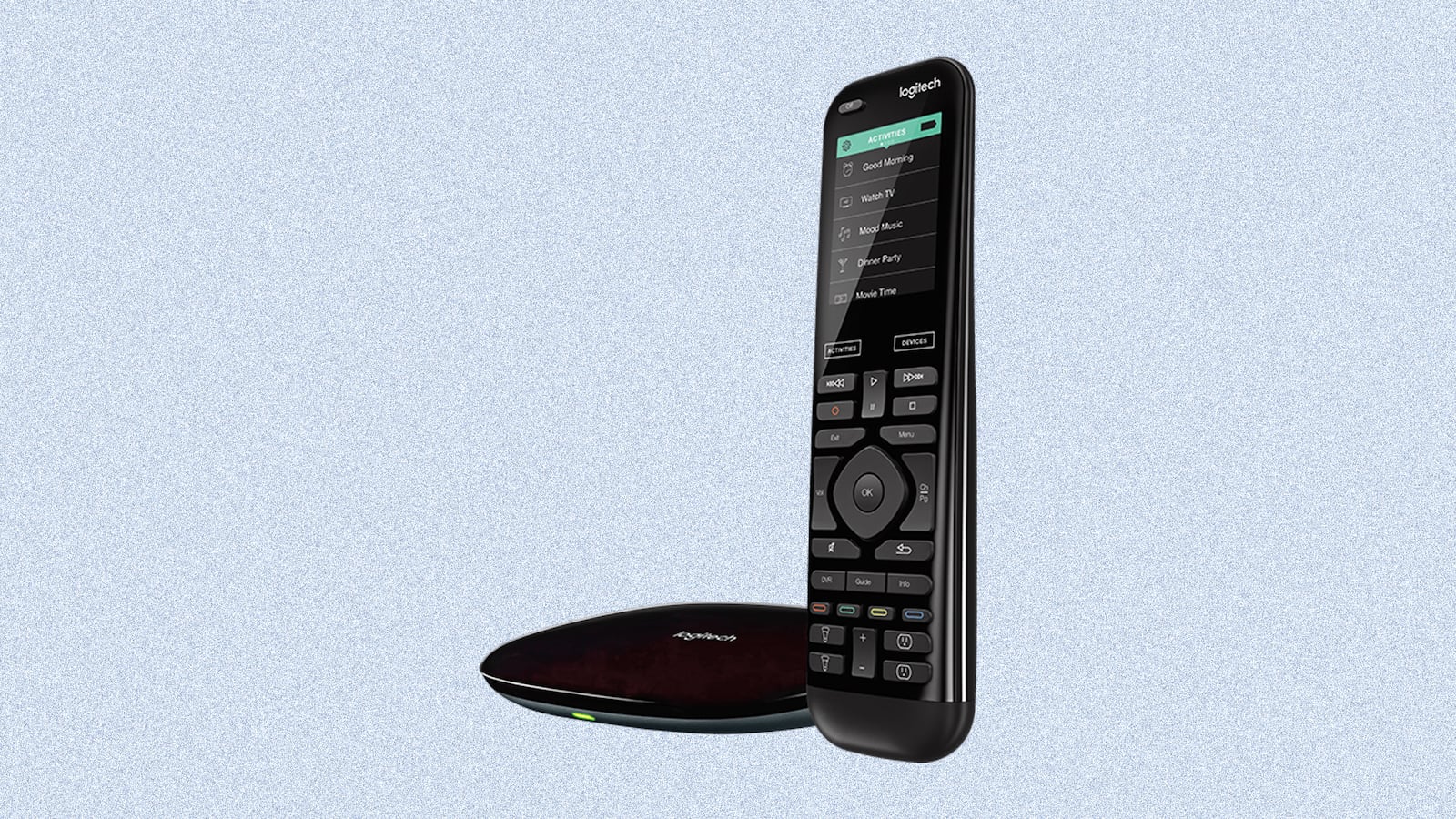Fifty years ago, TV was simple: you had a few channels to watch at any given time, and a clicker that could adjust the volume or change the channel. But over time, things have gotten more complex. Now you might have a cable box, streaming device, and gaming console all hooked up at once, each with their own remotes full of buttons. That’s a lot of clutter on your coffee table.
You’d be forgiven for thinking remote control technology hasn’t come all that far, but there are better options out there. And while some radically new remotes are starting to come on the horizon—especially for those with lots of smart home devices—the $250 Logitech Harmony Elite is still my go-to when it comes to a user-friendly, tricked-out TV setup.
One Remote to Rule Them All

Universal remotes are nothing new: you can head to Walmart and buy a programmable, multi-device remote for $20 that’ll consolidate at least a few of the clickers in your drawer. In fact, your cable company may have provided you with a remote that allows you to control multiple infrared devices. But in 2019, this just isn’t enough anymore.
Plenty of newer devices—like the Roku stick and PlayStation 4—aren’t compatible with old-school infrared remotes. They are, however, compatible with Wi-Fi and Bluetooth, which the Harmony Elite supports through its bundled Harmony Hub. The remote communicates with the Hub via RF signals, and the Hub can then communicate with all your devices over infrared, Wi-Fi, or Bluetooth—whatever they support.
And, instead of having to go through a complex pairing process where you’re typing codes into the remote and “learning” certain functions, Logitech’s remotes allow you to program the entire thing through a desktop or mobile app. Their software isn’t perfect, but it’s a lot easier to type the model number of your TV than it is to futz with infrared codes, and once you get through the initial slog of setting everything up, controlling your home theater is as easy as pie.
Activities Instead of Devices

Logitech’s remotes use a slightly different paradigm than most, which they call “Activities.” This can seem a bit confusing at first, but once you figure it out, it becomes a much better way to control your home theater.
On a more traditional universal remote, you would click the name of a device—say, “TV”—then press the Power button to turn it on. You’d then press another device button—like “DVD”—to control your content. On a Logitech Harmony remote, you’ll instead press an activity—like “Watch TV” or “Watch the Roku”—and it’ll turn on all the necessary devices for you at once, with the correct options automatically assigned to the remote’s buttons.
What’s even cooler is that you can customize what each button does. So in the “Watch Roku” activity, you may decide you want the “Info” button to show the TV’s Info menu, rather than the Roku’s—you can do that. If there isn’t a corresponding Harmony button for the function you want, you can add it to the remote’s touch screen. For example, I have a custom option on the screen called “Picture Mode” that cycles between my TV’s different image presets. And since it’s all customizable, you can make sure the screen isn’t cluttered with settings you don’t use.
It’s worth mentioning that you can also include smart home devices in these activities...so an activity called “Movie Night” might turn your TV on, switch it to your Blu-ray player, and dim the lights. In my experience, smart home control is hit or miss in terms of reliability—which is disappointing—but hardly a deal breaker, since that isn’t really what makes the remote worthwhile.
No Need to Point the Remote...or Even Touch It At All

Finally—and this is what really drew me toward the Harmony Elite when compared with its cheaper Logitech siblings—the remote’s usage of RF and Wi-Fi mean you never have to point the remote at the TV. This may seem like a silly benefit, but since it takes 15-20 seconds to turn all your devices on, that means you don’t have to stand there holding your arm out like a statue while you wait for everything to start up. You can press the “Watch TV” activity, toss the remote on your couch, and plop down while everything turns on for you.
Or, even better, you can integrate the Harmony Hub with a voice assistant like Alexa, allowing you to merely say “Turn the TV on” to get everything up and running. This is particularly awesome in cases where you’re doing something else—like making a sandwich in the kitchen—and want your TV to be turned on and ready for you when you make your way back to the living room. You don’t even need to touch the remote. In many cases, you can be even more specific--with the Harmony and a Roku, for example, I can say something like “Turn on Netflix,” and it’ll automatically turn on the TV, set my receiver to the correct input, and start the Netflix app for me. It seems like a small convenience, but if you have a complex setup with a lot of devices, it eliminates a pretty big annoyance out of your day when you can just turn it all on with a simple voice command. And now that I’ve gotten used to it, I can’t ever go back to the old way of doing things.
Scouted is internet shopping with a pulse. Follow us on Twitter and sign up for our newsletter for even more recommendations and exclusive content. Please note that if you buy something featured in one of our posts, The Daily Beast may collect a share of sales.






